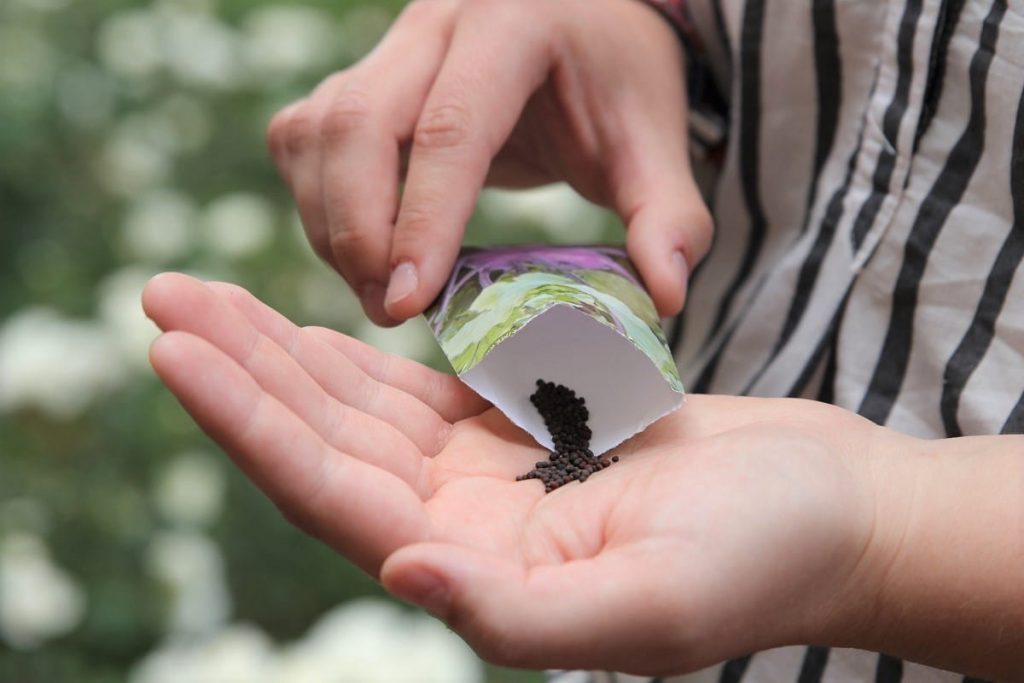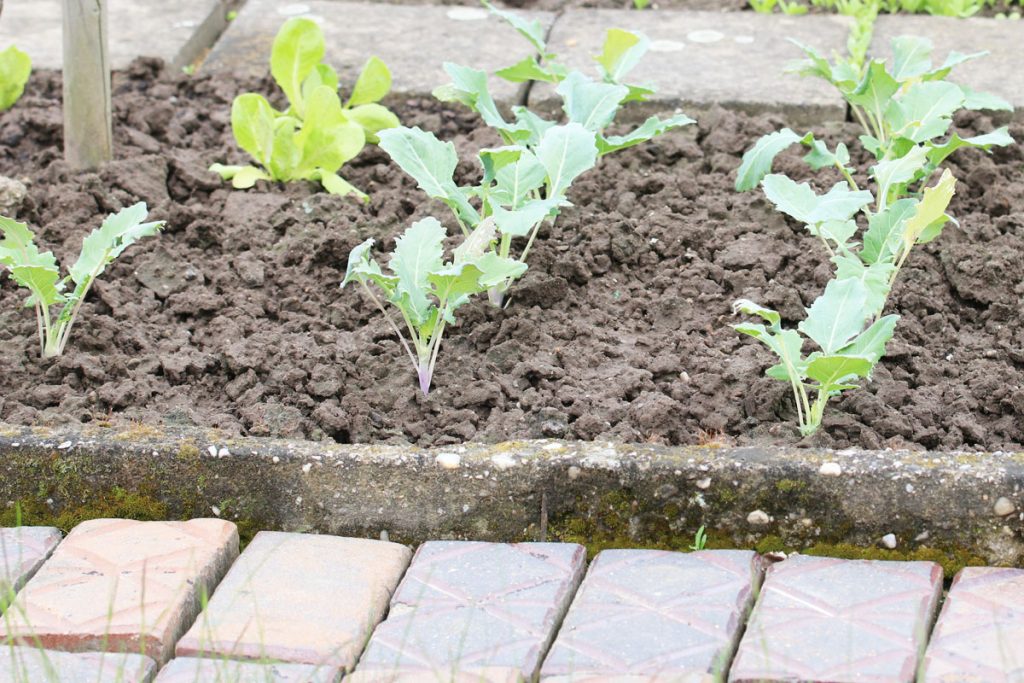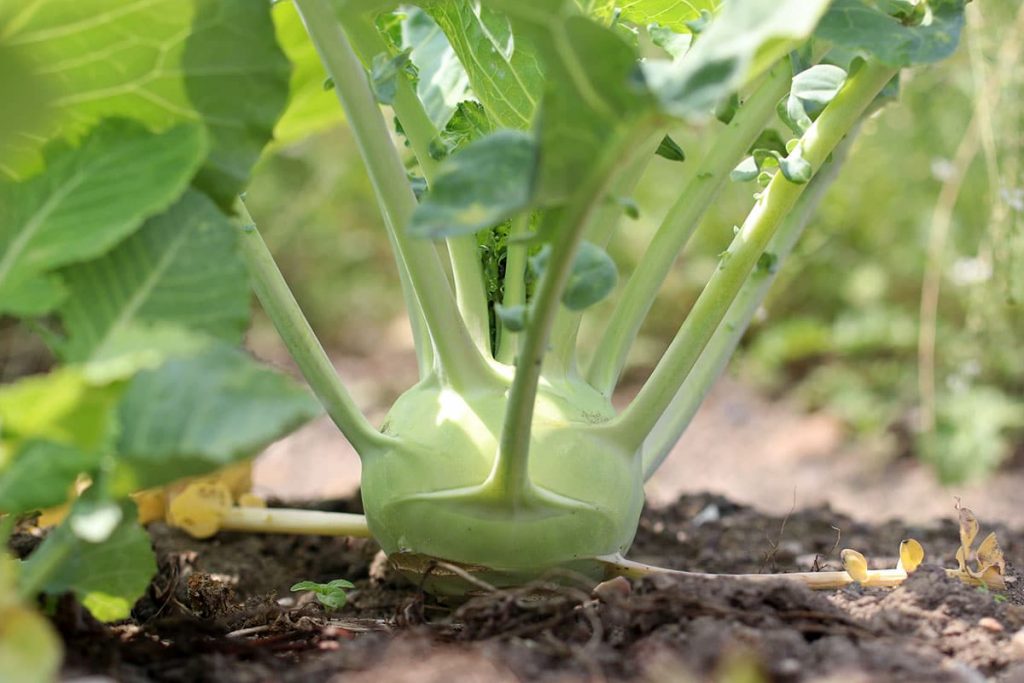Kohlrabi, known in botanical terminology as Brassica oleracea var. gongylodes, is delicious, healthy and versatile. Find out here how to preplant kohlrabi and what to look for when sowing and pricking out.
- Pricking out kohlrabi is recommended
- Sowing kohlrabi is very easy with the right knowledge
- staggered sowing allows fresh harvests over a long period of time
- preplanting is recommended from February
- timing should be chosen correctly
Contents
- 1 Substrate
- 2 Location
- 3 Sowing & pre-growing
- 4 Care
- 5 Pricking out kohlrabi
- 6 Planting distance
- 7 Time
- 8 Harvest
- 9 Reseeding
- 10 Frequently asked questions
- 11 Can kohlrabi also be grown in pots?
- 12 Is it necessary to prepare the seeds of kohlrabi?
- 13 How long does it take from pre-growing to harvesting?
- 14 Author
Substrate
- humus
- loose
- constantly slightly moist
Suitable is a mixture of:
- Garden soil
- coconut fiber
- compost
- sand

Tip: Prepare the soil in the previous year is useful. A bed should be dug up and fertilized. For pot culture is enough to mix in the fall. This allows valuable microorganisms to spread in it.
Location
Kohlrabi is undemanding when it comes to its planting site. Sunny to semi-shady places are ideal. To avoid are:
- blazing sun
- strong wind
- Waterlogged soil
Tip: Raised beds and greenhouses are also ideal for particularly early sowing and harvesting. The temperature is higher here, which means that you can harvest not only earlier, but also longer.
Sowing & pre-growing
growing kohlrabi is very easy and requires little effort. Required are:
- Growing soil, ideally sterilized.
- seed trays or flower pots
- suitable planting place
- Seeds
- Water
- Sterilize soil: To ensure that neither germs nor parasites can prevent healthy growth, the soil should be sterilized beforehand. This works, for example, by moistening and then baking or heating in the microwave.
- Prepare planters: Once the soil has cooled, it can be filled into the planters. It is lightly pressed down in the process.
- Sowing: Sow the kohlrabi seeds with sufficient spacing on the growing medium. Covering with soil should be done only very lightly, as they are light germinators.
- Watering: The soil must be moistened evenly, but not wet. Light watering or spraying with water is sufficient.
- Finding space: For successful germination, the seeds must be placed in a bright location at a temperature between 12 to 18 °C. A slightly warmer area is not problematic as long as there is enough light. However, the temperature should not fall below 12 °C.
- Tip: Sowing kohlrabi around April is also possible directly into the bed. Only the temperatures must be correspondingly high.

Care
As the seeds begin to germinate, little care is required. Keeping the soil moist in combination with constant temperature and light is quite sufficient. The warmer the growing containers are, the brighter it needs to be. Therefore, if sowing very early, it is recommended to use a planting lamp.
Pricking out kohlrabi
Pricking is the process of sorting out the seedlings and increasing the planting distance. It is done as soon as the first leaves of the seedlings have formed and they are about five to ten centimeters high. Here, the soil is carefully removed from the roots so that they are not damaged. The seedlings are placed in individual pots so that they can later be placed in the open more easily. A growing tray with divisions already in place makes it easier to sort them out and transplant them to the outdoors.
Planting distance
Already when pricking out or planting in the open, the appropriate distance must be taken into account. However, there is no general answer. How much space the plants need depends on the variety. For small varieties, about 20 to 30 centimeters between the plants and the rows are sufficient. For larger cultivars, on the other hand, 40 to 50 centimeters may be necessary.

Time
The plants may be planted outdoors as soon as temperatures no longer fall below 12 °C, even at night. In years with particularly mild winters or regions with very warm climates, this is often possible as early as March.
This is especially true if it is a raised bed, where the temperature is up to eight degrees higher.
Harvest
Harvest maturity is reached about six to eight weeks after planting or sowing. Again, however, it depends on several factors. Among them:
- Care
- Variety
- Location
- Substrate
- Weather

Reseeding
To ensure that fresh kohlrabi can always be harvested for a long time, you can reseed kohlrabi immediately after removing the tubers, or you can plant seedlings that have already been grown. However, it is then recommended to incorporate some fresh soil. This will keep the nutrient content high.
Tip: So-called staggered sowing makes it possible to harvest fresh every week. For this purpose, only seeds or seedlings are sown at intervals of a few days.
Frequently asked questions
Can kohlrabi also be grown in pots?
Yes, this is certainly possible. Culture in a tub can also work. This makes the plant suitable even for the balcony or terrace.
Is it necessary to prepare the seeds of kohlrabi?
No, it is not necessary. Planting them in growing soil is quite enough. In addition, they should not be covered too much with soil.
How long does it take from pre-growing to harvesting?
It depends on the conditions. With optimal care, the plants thrive faster than with a lack of light and low temperatures or blazing midday sun. Therefore, no general statement can be made about this. A good orientation is provided by the variety. As a rule, six to eight weeks after sowing in the open field must be expected. In the case of very early pre-breeding and cool temperatures or changeable weather, harvest maturity can also take longer.

